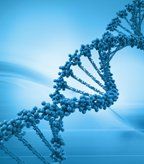ASCO: Triple-Negative Breast Cancer Response to Neoadjuvant Chemotherapy by Subtype
In a study presented at ASCO, a team of researchers used microarrays to characterize 130 triple-negative breast cancer patients treated with neoadjuvant chemotherapy to see whether certain subtypes are more likely to respond to the treatment.
CHICAGO-Triple-negative breast cancers are a heterogeneous group of cancers defined by their lack of estrogen receptor expression or HER2 overexpression rather than any common genetic features. This group of breast cancers tend to be more aggressive compared with other breast tumor subtypes and are more difficult to treat due to a lack of genetic targets for drug development.

Researchers from the Vanderbilt-Ingram Cancer Center in Nashville, including Jennifer A. Pietenpol, PhD, director of the center and professor of oncology, published a study in 2011 in the Journal of Clinical Investigation, identifying seven distinct triple-negative breast cancer subtypes based on their genetic expression profiles. The study showed that subtype classification could predict outcomes to targeted treatments, such as androgen receptor antagonists and PI3K/mTOR inhibitors.
Now, a team led by Hiroko Masuda, MD, of the University of Texas MD Anderson Cancer Center in Houston, has used these novel subtype definitions to link the subtypes to clinical response to chemotherapy.
The group used microarrays to characterize 130 breast cancer patients who were treated with neoadjuvant chemotherapy to see whether certain subtypes are more likely to respond to the treatment.
After adjusting for clinical factors, such as clinical stage, age, treatment regimens, and other factors, molecular subtype was an independent predictor of pathological complete response (pCR) status (P = .0437).
The results were presented by Masuda at the annual meeting of the American Society of Clinical Oncology (ASCO). The results need to be validated with larger patient cohorts but suggest that defining subtypes of triple-negative breast cancer and identifying specific therapy regimens for these subtypes will improve patient outcomes.
“We still don’t know how many subtypes can meaningfully predict drug sensitivity and prognosis,” said Masuda during her presentation. “Gene expression analysis has identified molecular subtypes of [triple-negative breast cancer] that are defining our understanding of breast cancer biology and enabling development of targeted therapy.”
The seven genetic clusters identified by the Lehmann et al study are basal-like 1 (BL1), basal-like 2 (BL2), immunomodulatory (IM), mesenchymal (M), mesenchymal stem-like (MSL), luminal androgen receptor (LAR), and what was called an unstable (UNS) cluster.
The 130 patients were all treated with sequential taxane and anthracycline-based chemotherapy, and follow-up was for a median of 68.1 months.
To assess the independent utility of triple-negative breast cancer subtype for predicting pCR status, the researchers fit a logistic regression model to their data and used age, clinical stage, treatment regimens, and nuclear grade as potential explanatory factors.
“We expected the BL1 and BL2 subtypes to have the best responses and the LAR subtype to have the worst, based on the genetic and biological characteristics [of these subtypes],” said Masuda. Because BL1 and BL2 subtypes are generally highly proliferative tumors, the group had hypothesized that these two subtypes would benefit the most from DNA-damaging chemotherapy agents.
The study found that triple-negative breast cancer subtype can indeed predict pCR rates: The BL1 subtype had the highest pCR rate (52%), while the BL2 and LAR had the lowest (0% and 10%, respectively).
These seven molecular subtypes better predicted pCR status compared with the intrinsic basal-like or non–basal-like subtypes.
“Clearly these regimens are not sufficient for BL2 subtype patients,” said Masuda. “Targeted treatments for this subtype are necessary to improve outcomes for these patients.”
Due to the relatively small number of patients in the trial, correlations of molecular subtype to overall survival were not statistically significant.
A prospective validation of whether differential pCR rates are indeed associated with distinct molecular subtypes of triple-negative breast cancer is needed. As a follow-up study, Masuda and colleagues plan to analyze the seven subtypes at the protein level to understand the pathways that drive the genes in each subtype and to identify potential targeted therapies.